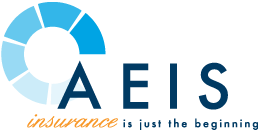Why Tax Treatment of Employee Benefits Matters
Written by: AEIS

A well-structured employee benefits package is a key factor in attracting and retaining top talent. Part of the reason why businesses offer benefits to employees in the first place is to give them some incentive to work there that goes above and beyond their base salary.
You might not be able to offer more money per hour than your biggest competitor... but if your benefits package is more valuable, you're still able to remain competitive.
That is where the discussion of pre-tax vs post-tax benefits begins. The classification of benefits as pre-tax or post-tax impacts both employee take-home pay and employer payroll costs. Understanding the tax implications of pre-tax and post-tax benefits is essential for designing a package that maximizes financial advantages for both businesses and employees.
What Are Pre-Tax Benefits?
As the term implies, pre-tax benefits are those that are deducted from an employee's paycheck before any income taxes are applied. This reduces the amount of taxable income that an employee makes per year.
Common Pre-Tax Benefits
- Section 125 Cafeteria Plans (POP Plans) and Pre-Tax Premiums: These are employer-sponsored benefits that let employees pay for medical, dental, and vision insurance with pre-tax dollars under Section 125 plans.
- Flexible Spending Accounts (FSAs): Allow employees to set aside pre-tax funds for eligible medical and dependent care expenses. Employers should be aware of rollover provisions or grace periods to help employees maximize unused funds.
- Health Savings Accounts (HSAs): Available to employees enrolled in high-deductible health plans (HDHPs), HSAs allow tax-free contributions, earnings, and withdrawals for qualified medical expenses. While HSAs offer federal tax benefits, California taxes contributions and interest earnings at the state level.
- Commuter Benefits: Pre-tax deductions for transit passes, vanpooling, and qualified parking can provide tax savings for employees who commute to work.
Advantages of Pre-Tax Benefits
Obviously, the biggest advantage to pre-tax benefits is that employees pay fewer taxes on their income. They have a lower taxable income, which means they're actually taking home more money when all things are considered. This also helps to reduce the payroll taxes that are paid by both employers and employees, meaning the employer benefits from employees leveraging pre-tax benefits too.
This also helps to increase benefit participation. Meaning that an employer is actually getting the most value from their investment.
For employers, offering pre-tax benefits is one of the many ways that they can reduce payroll taxes. This can create a potentially enormous amount of savings for the company depending on the size of the workforce.
HSAs, FSAs, and Other Pre-Tax Benefits: What You Need to Know
When it comes to something like an HSA, where an employee will contribute pre-tax money to cover qualifying medical expenses, or an FSA, where employees can use pre-tax money for medical or dependent care, there are a number of key things to keep in mind.
Take an FSA, for example. An FSA is a "use it or lose it" kind of account - meaning that if you don't actually use the money you're putting in, it will "expire" at the end of the term. With an HSA, on the other hand, funds still must be spent on qualifying expenses but that money can grow tax-free over time.
What Are Post-Tax Benefits?
Post-tax benefits are those that are paid out after taxes have been deducted from an employee's paycheck. While they do not reduce taxable income, they can provide flexibility and long-term financial advantages to employees.

Examples of Common Post-Tax Benefits
- Life Insurance: Employer-paid group life insurance exceeding $50,000 in coverage is subject to imputed income taxation.
- Long-Term Disability Insurance: If employees pay premiums with post-tax dollars, any benefits received will not be taxed. However, if premiums are paid pre-tax, benefits will be taxable upon payout.
- Employee Assistance Programs (EAPs): While many EAP services are tax-free, expanded benefits such as financial counseling or wellness reimbursements may be taxable.
Advantages of Post-Tax Benefits
Post-tax benefits tend to be slightly more flexible in how they can be used, and they pose no impact on taxable impact at all - meaning that employees can still qualify for other benefits at the end of the year.
Considerations for Employers
While post-tax benefits do not provide immediate tax savings, they can be valuable for long-term financial protection. Employers should communicate the trade-offs between pre-tax and post-tax benefit structures to help employees make informed decisions.
Additionally, pre-tax benefits introduce compliance considerations as they need to pass non-discrimination testing to ensure the plan is not unfairly favoring highly compensated employees.
California-Specific Considerations
- Paid Family and Medical Leave: California’s Paid Family Leave (PFL) program provides wage replacement benefits to employees who take time off to care for a seriously ill family member or bond with a new child. Additionally, California's Family and Medical Leave protections require certain employers to provide job-protected leave, which can affect workforce planning and benefit offerings. Employers operating in California must account for state-specific tax treatment when structuring benefits:
- HSAs Are Taxed at the State Level in California: Unlike federal tax rules, California taxes both contributions and earnings on HSAs.
- Pay Data Reporting Requirements: Under SB 1162, employers with 100+ employees must report compensation data, which may include taxable benefits.
- CalSavers Retirement Program: California mandates that businesses with five or more employees offer a retirement plan or enroll in the state-run CalSavers program, which has tax implications for employer contributions.
- State Disability Insurance (SDI) Impact: SDI is calculated based on
gross wages, meaning pre-tax deductions affect employee contributions differently than in other states.
Key Differences Between Pre-Tax and Post-Tax Benefits
The major difference between pre-tax and post-tax benefits has to do with the tax impact itself. Post-tax benefits do not affect income tax calculations, while pre-tax benefits do. The types of benefits that are available pre-tax are also different than post-tax.
Choosing the Right Approach for Your Workforce
The decision between pre-tax and post-tax benefits should align with business objectives and employee needs. Employers should:
- Evaluate Workforce Priorities: Gather employee feedback on preferred benefits to enhance participation and satisfaction.
- Analyze Tax Implications: Work with a benefits advisor to assess payroll tax savings and long-term financial impacts.
- Maintain Compliance: Keep up with state and federal regulations affecting benefits taxation, especially in states like California with unique tax rules.
Optimizing Benefits Strategies with Expert Guidance
A well-balanced benefits package provides financial advantages for both employers and employees. Understanding how tax treatment affects benefits allows businesses to design cost-effective, competitive offerings.
AEIS specializes in helping businesses navigate the complexities of benefits taxation and compliance. If you want to review your current benefits strategy or explore ways to maximize tax advantages, contact AEIS today.
Disclaimer: Any information related to compliance, laws and regulations, or other subject matters in this content is intended to be informational and does not constitute legal advice regarding any specific situation. The content is based on the most up-to-date information available on the date it was published and could be subject to change. Should you require further assistance or legal advice, please consult a licensed attorney.
We're here to help.
Schedule a free phone consultation today.
Latest Insights
Advanced Estate & Insurance Services, Inc. CA License #0M90887
Duda Website Design & SEO by RivalMind



